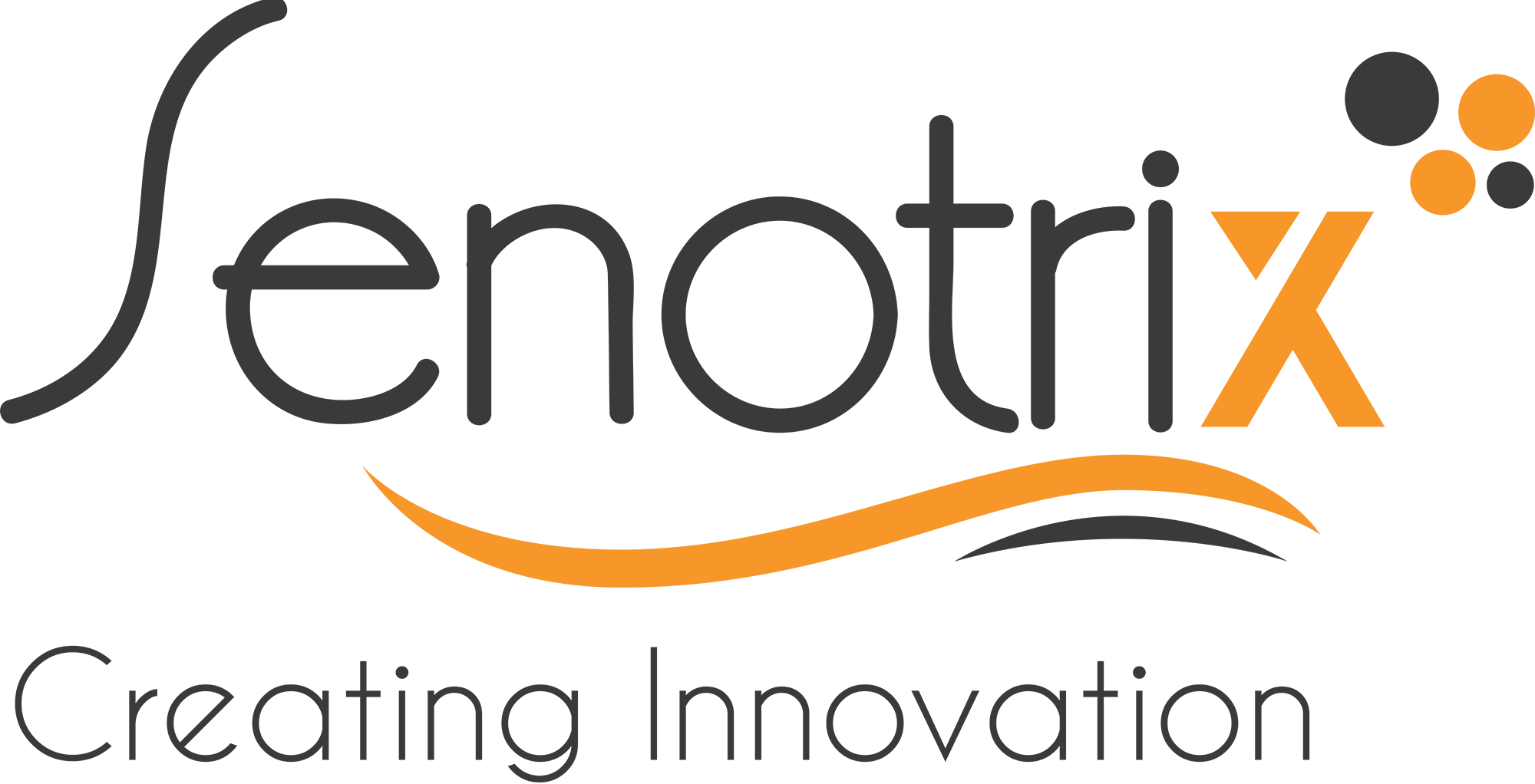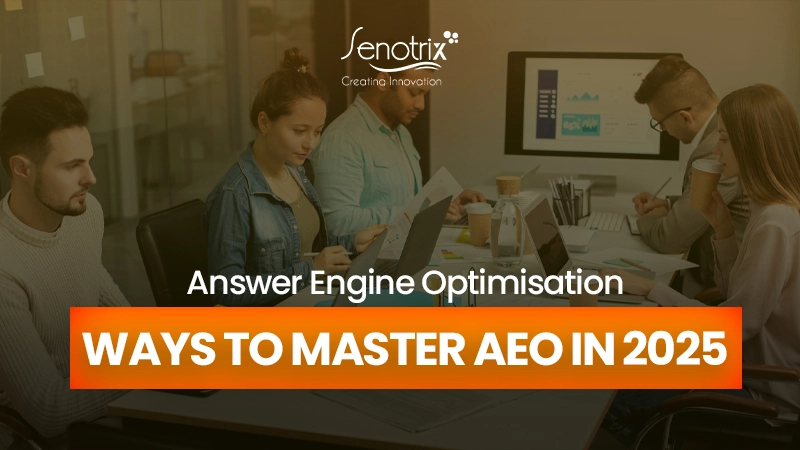[TL;DR]
Answer Engine Optimisation (AEO) focuses on optimising content for direct answers in search results, voice assistants, and AI platforms. This comprehensive guide covers AEO fundamentals, implementation strategies, advanced techniques, and common challenges. Learn how to master featured snippets, voice search optimisation, and structured data to dominate answer-driven search results in 2025.
Answer Engine Optimisation (AEO) is the practice of optimising content to appear in direct answer formats across search engines, voice assistants, and AI platforms. Unlike traditional SEO, which targets rankings, AEO focuses on becoming the definitive source for specific user queries.
The shift towards zero-click searches has transformed how users consume information. Google now provides direct answers for 65% of search queries through featured snippets, knowledge panels, and AI-generated responses. Similarly, voice search accounts for 27% of mobile queries, whilst AI chatbots handle millions of daily information requests.
Your competitors are already optimising for answer engines, while many businesses remain focused on outdated ranking tactics. Our team at Senotrix has identified the exact strategies that help brands dominate answer placements and capture high-intent traffic before users even click.
What are the Foundations of AEO?
Modern users expect immediate, accurate answers without scrolling through multiple search results. This behaviour shift drives the demand for conversational, semantic search queries that mirror natural speech patterns rather than keyword-focused searches.
User intent now centres on problem-solving rather than information gathering. People ask complete sentences like “how to fix a leaking tap” instead of typing “tap repair.” This evolution requires content that directly addresses these natural language queries with precise, actionable answers.
Types of Answer Engines
Search engine result page (SERP) features dominate Google’s interface and include:
- Featured snippets that provide direct answers above organic results
- People Also Ask boxes with expandable related questions
- Knowledge panels displaying entity information and facts
- Instant answers for calculations, definitions, and quick facts
Voice devices deliver spoken answers sourced from optimised web content:
- Amazon Alexa prioritises concise, conversational responses
- Google Assistant favours authoritative sources with a clear structure
- Apple Siri focuses on mobile-friendly, locally relevant answers
AI chat platforms synthesise information from multiple sources to create comprehensive responses. These systems favour content with clear structure, authoritative sources, and factual accuracy.
Core Ranking Criteria for Answer Engines
Answer engines evaluate content based on several key factors:
Relevance and Intent Matching:
- Direct response to user queries within the first 50 words
- Semantic understanding of topic relationships and context
- Coverage of related subtopics and user concerns
Authority and Trust Signals:
- Domain credibility and established expertise in the field
- Author qualifications and professional recognition
- External validation through quality backlinks and citations
- E-E-A-T compliance (Experience, Expertise, Authoritativeness, Trustworthiness)
Format and Structure:
- Scannable content with clear headers and logical flow
- Appropriate use of lists, tables, and visual elements
- Mobile-friendly design and fast loading speeds
Schema markup provides structured data that helps answer engines understand content context and relationships. Proper implementation increases visibility across multiple platforms.
5 Steps to Master Answer Engine Optimisation in 2025
Mastering AEO requires a systematic approach that combines user research, content optimisation, and technical implementation. Here are the 5 steps that transform your content into answer engine magnets.
Step 1: Research User Questions and Intent
Identify the specific questions your audience asks through multiple research channels:
Google’s Native Features:
- People Also Ask boxes reveal actual user queries and intent patterns
- Related searches show connected topics and alternative phrasings
- Autocomplete suggestions indicate popular search behaviours
Social Platform Research:
- Reddit discussions contain authentic user questions and pain points
- Quora answers reveal detailed user concerns and follow-up questions
- Industry forums showcase technical queries and specialist needs
- Facebook groups and LinkedIn discussions provide professional insights
Voice search data reveals conversational query patterns that differ significantly from typed searches. Use tools like Answer The Public and SEMrush’s Keyword Magic Tool to discover long-tail, question-based keywords.
Competitor analysis involves examining which businesses currently occupy answer placements for your target topics. Study their content structure, answer format, and coverage depth to identify improvement opportunities.
Step 2: Create Clear, Direct Answer Content
Answer-focused content begins with immediate, specific responses within the first 30-50 words. This approach satisfies both featured snippet requirements and voice search optimisation, ensuring maximum visibility across answer platforms.
Structure content using question-and-answer formats, numbered lists, comparison tables, and step-by-step processes. These formats align with how answer engines extract and display information to users seeking quick solutions.
Effective Content Formatting Techniques:
- Writing scannable headers that mirror natural user questions
- Using conversational language that reflects how people actually speak
- Providing comprehensive coverage that addresses related concerns and follow-up questions
Content depth matters beyond the initial answer. Provide comprehensive coverage that addresses related questions and concerns users might have, establishing your content as the definitive resource on the topic.
Step 3: Structured Data and Schema Markup
Schema markup types that enhance answer engine visibility include:
Essential Schema Types:
- The FAQs schema identifies question-and-answer content within pages
- How-To schema organises step-by-step instructions for processes
- The article schema provides context about the content type and authority
- Q&A schema highlights individual question-answer pairs
Implementation Best Practices:
- Test markup using Google’s Rich Results Test before publication
- Validate schema accuracy through structured data testing tools
- Monitor performance impact through Search Console reports
- Update the schema when content changes or expands
Technical implementation requires proper JSON-LD formatting and placement within page headers. Regular testing prevents markup errors that could reduce answer engine visibility.
Step 4: Optimise for Multi-Modal and Voice Search
Natural language optimisation involves writing content that sounds conversational when read aloud. Voice assistants favour content that flows naturally and avoids technical jargon or complex sentence structures that confuse spoken delivery.
Mobile optimisation ensures fast loading speeds and responsive design across all devices. Voice search users often seek immediate answers on mobile devices, making technical performance crucial for capturing these high-intent queries.
Voice Search Optimisation Strategies:
- Using question-led sentences that mirror natural speech patterns
- Including location-specific terms for “near me” and local queries
- Structuring answers in 20-30 word snippets for voice delivery
- Testing content readability at conversational speaking pace
Answer delivery formats differ significantly between visual snippets and spoken responses. Optimise content for both scenarios by providing clear, concise answers that work effectively whether displayed on screen or read aloud by voice assistants.
Step 5: Monitor, Test, and Adapt with Analytics
Track featured snippet presence using tools like SEMrush, Ahrefs, and Google Search Console. Monitor which keywords trigger answer placements and identify opportunities for expansion or improvement.
Performance metrics include snippet impression share, click-through rates from answer placements, and voice search visibility. These metrics provide insight into content effectiveness and user engagement patterns.
Top Monitoring Activities:
- Regular competitor analysis to identify when rivals capture your answer placements
- Algorithm update tracking to adapt strategies for changing SERP features
- Content performance audits to refresh underperforming answer content
- Schema markup validation to ensure technical implementation remains effective
Algorithm updates frequently affect answer engine criteria and display preferences. Stay informed about changes and adapt content strategies accordingly to maintain consistent visibility.
Advanced AEO Strategies and Tools
Artificial intelligence and natural language processing tools help identify trending questions and content opportunities before they become competitive. These technologies analyse search patterns and predict emerging query types.
Automated content audits scan existing content for answer optimisation opportunities. Tools can identify pages with high potential for featured snippet capture and suggest specific improvements for better performance.
Identifying Your Current AEO Performance
Content gap analysis reveals topics your competitors address that you’re missing. This analysis helps prioritise content creation efforts and identify high-value opportunities for answer engine dominance.
Conduct a systematic audit of your existing content to identify AEO opportunities and performance gaps. Start by analysing your current featured snippet presence using Google Search Console’s Performance report filtered by search appearance.
Map your content inventory against target keywords to identify pages with answer potential. Look for content that ranks on page one but doesn’t capture featured snippets – these represent immediate optimisation opportunities.
Essential audit components include:
- Current featured snippet wins and losses across your keyword portfolio
- Content format analysis to identify pages lacking a proper question-answer structure
- Competitor answer placement analysis for your target topics
- Schema markup implementation gaps across existing content
Score each piece of content using an AEO readiness framework. Evaluate answer clarity, format structure, content depth, and technical implementation on a 1-10 scale to prioritise optimisation efforts.
Create an optimisation priority matrix that balances current ranking position, search volume, and business value. Focus first on high-ranking pages with clear answer potential and significant traffic opportunity.
AEO Audit Tools
Professional AEO analysis requires specialised tools and systematic approaches:
Dedicated AEO Software:
- SEMrush Position Tracking monitors featured snippet presence
- Ahrefs Rank Tracker identifies answer box opportunities
- BrightEdge ContentIQ analyses snippet performance metrics
- MarketMuse reveals content gaps in answer coverage
Technical Audit Requirements:
- Schema markup validation through Google’s testing tools
- Page speed analysis for mobile and desktop performance
- Mobile compatibility checks for voice search optimisation
- Content structure assessment for snippet extraction
Regular competitor analysis identifies successful strategies and market opportunities. Monitor rival content updates, answer placements, and performance changes to inform optimisation efforts.
Enhancing E-E-A-T in Answer Content
- Author expertise signals include detailed author bios, professional credentials, and industry recognition. Answer engines favour content from established experts with proven knowledge in their fields.
- Content freshness involves regular updates, current statistics, and timely references. Answer engines prioritise recently updated content for topics where information changes frequently.
- External validation through citations, references, and backlinks from authoritative sources strengthens content credibility. These signals help answer engines assess content trustworthiness and accuracy.
- Source transparency includes clear attribution, fact-checking, and reference links. This transparency builds trust with both answer engines and users seeking reliable information.
Common Challenges in AEO
Answer Engine Optimisation presents unique challenges that require strategic solutions:
Content Competition Issues:
- Answer dilution from multiple similar sources providing identical responses
- Snippet volatility where placements change frequently between competitors
- Content commoditisation, where unique insights become widely copied
Technical Implementation Problems:
- Schema markup errors that prevent proper content extraction
- Page speed issues affecting mobile voice search performance
- Mobile compatibility problems are reducing answer engine visibility
Strategy and Execution Challenges:
- Over-optimisation that prioritises search engines over user value
- Shallow content that lacks depth and comprehensive coverage
- Ambiguous user intent requiring multiple answer interpretations
Successful AEO requires balancing technical optimisation with genuine user value. Focus on providing substantial, unique insights rather than gaming algorithmic preferences.
Bottom Line
Most agencies still think AEO is just about featured snippets. They’re missing the bigger picture entirely. AEO is the future of search visibility in an AI-driven digital landscape. The businesses that master it will dominate answer placements whilst competitors struggle to adapt. Focus on providing genuine value through direct, actionable answers that solve real user problems.
At Senotrix Ltd, we know that Answer Engine Optimisation is really about becoming the go-to source for your industry’s most important questions. We don’t just optimise for search engines. We optimise for the humans behind the searches. The result? Our clients become recognised authorities in their fields.
Stop chasing rankings that everyone else is fighting for. Start owning the questions that matter to your customers, the ones your competitors don’t even know exist yet. Get in touch with our experts to bring a massive change!
FAQs
What type of content works best for AEO?
Direct, conversational content that immediately answers specific user questions performs best. Use clear headings, numbered lists, and structured formats that answer engines can easily extract and display effectively.
How can I track if my content is being used in answer engines or voice search?
Use Google Search Console to monitor featured snippet impressions and tools like SEMrush or Ahrefs to track answer box presence. Voice search tracking requires third-party analytics platforms.
Does AEO help improve traditional SEO rankings?
Yes, AEO strategies often improve traditional rankings through better content structure, user engagement, and topical authority. Answer-optimised content typically performs well across all search formats simultaneously.
How often should I update my answer-focused content?
Update answer content quarterly for evergreen topics and monthly for trending subjects. Monitor competitor changes and algorithm updates to maintain visibility and accuracy in answer placements.
Can AEO benefit local and small businesses?
Absolutely. Local businesses can dominate location-specific answer queries with less competition than national keywords. Voice search particularly favours local businesses for “near me” and location-based queries.
What role does structured data really play in AEO?
Structured data provides context that helps answer engines understand and extract your content accurately. Proper schema markup significantly increases featured snippet and voice search visibility opportunities.
Author Profile

- Wahab Saleem
- Senotrix Ltd is a UK-based SEO and digital marketing agency helping fast-growing brands boost visibility, traffic, and ROI through data-driven strategies.
Latest entries
 SEOAugust 19, 2025Answer Engine Optimisation: Ways To Master bb In 2025
SEOAugust 19, 2025Answer Engine Optimisation: Ways To Master bb In 2025 SEOAugust 19, 20257 Tips to Choose an SEO Agency for Your Business in 2025
SEOAugust 19, 20257 Tips to Choose an SEO Agency for Your Business in 2025 SEOAugust 19, 2025How to Choose an SEO Company in 2025?
SEOAugust 19, 2025How to Choose an SEO Company in 2025? SEOAugust 19, 20257 Qualities of a Great SEO Company: A Complete Guide
SEOAugust 19, 20257 Qualities of a Great SEO Company: A Complete Guide




